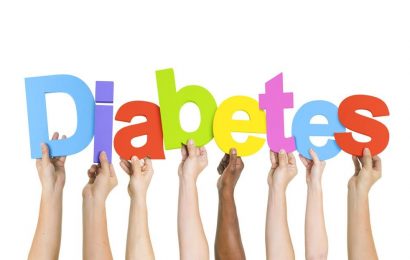Managing diabetes: medications
While there is currently no cure for diabetes, it can be managed, and you can live a long and healthy life if you take care of yourself.
One way to manage diabetes is by taking medication. You may need medication to keep your blood glucose at a safe level; you may also need medication to help manage your blood pressure and cholesterol, since you have a higher risk of heart and kidney disease when you have diabetes.
There are several different types of diabetes medications, including:
• Insulin: People with type 1 diabetes must inject insulin to survive. Many people with type 2 diabetes need to take insulin, too. Insulin is injected using a syringe or a pen device; some people wear an insulin pump, instead.
• Diabetes pills: Diabetes pills are for people who have type 2 diabetes. There are nine different classes of diabetes pills (metformin, sulfonylureas, meglitinides, thiazolidinediones, DPP-4 inhibitors, SGLT2 inhibitors, alpha-glucosidase inhibitors and bile acid sequestrants and dopamine receptor agonists). Your healthcare provider will work with you to prescribe the best type of pill for you. You may also take more than one type of pill.
• Non-insulin injectables: These are medications that have to be injected, but they are not insulin. They help your body use insulin better and may even help you lose weight.
Be sure to take your medication as prescribed, even if you feel well or your blood glucose levels are in your target range. Tell your provider if you have side effects or if you have trouble affording your medications.
Checking your blood glucose
Checking your blood glucose with a meter is an important way to help you manage your diabetes. Without checking, you won’t know how your diabetes doing day to day. It’s especially helpful to check your blood sugar if you:
• Take insulin
• Are starting a new diabetes medication or are changing the dose of your medication
• Are pregnant
• Have frequent low blood sugars (hypoglycemia)
• Have low blood glucose but don’t feel symptoms
Ask your provider how often you should check your blood glucose and find out what your goals are. Common blood glucose goals for people with diabetes are:
• 80 to 130 before meals
• Less than 180 two hours after meals
You provider may be able to give you a blood glucose meter, or you can purchase one at your local pharmacy. A certified diabetes educator or your pharmacist can show you how to use your meter.
Keep a record of your blood glucose results or use a smart phone app to track them. Be sure to show your blood glucose results to your provider at your regular office visits.
Learn what to do if your blood glucose becomes too low (hypoglycemia) or too high (hyperglycemia). You may need a change in your diabetes medication, your eating plan, your physical activity plan, or all three.





